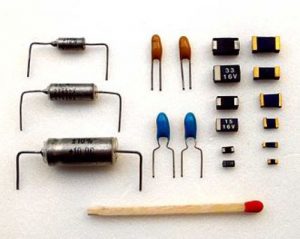Introduction
Capacitors are essential components in electronic circuits. They store and release electrical energy as needed. Two commonly used types of capacitors are aluminum electrolytic capacitors and tantalum capacitors. While they share the same fundamental function, they exhibit significant differences. This article will explore the distinctions between aluminum and tantalum capacitors. Hope that you can find the best suited for your specific application.

1. Dielectric Material:
- Aluminum Electrolytic Capacitors: These capacitors use an electrolyte (usually a liquid or gel) as the dielectric. The electrolyte is typically a conductive solution that allows for a high capacitance value.
- Tantalum Capacitors: Tantalum capacitors use tantalum metal as the dielectric. These capacitors have a solid electrolyte made of manganese dioxide.
2. Polarity:
- Aluminum Electrolytic Capacitors: These capacitors are polarized. That is to say, they have a positive and a negative terminal, and they must be connected with the correct polarity to function properly.
- Tantalum Capacitors: Tantalum capacitors are also polarized, with a marked positive terminal. Connecting them with the wrong polarity can result in catastrophic failure and potentially even safety hazards.
3. Capacitance and Size:
- Aluminum Electrolytic Capacitors: They typically offer higher capacitance values compared to tantalum capacitors for a given physical size.
- Tantalum Capacitors: Tantalum capacitors have a lower capacitance compared to aluminum electrolytic capacitors of similar physical dimensions. They are often smaller in size for the same capacitance value.
4. Voltage Rating:
- Aluminum Electrolytic Capacitors: They are available in a wide range of voltage ratings, making them suitable for various voltage requirements.
- Tantalum Capacitors: Tantalum capacitors usually have lower voltage ratings compared to aluminum electrolytic capacitors.
5. ESR (Equivalent Series Resistance):
- Aluminum Electrolytic Capacitors: They typically have higher ESR, so they have more internal resistance. This can affect their performance, particularly in high-frequency applications.
- Tantalum Capacitors: Tantalum capacitors have lower ESR, so they are more suitable for power supply filtering and other low ESR applications.
6. Reliability:
- Aluminum Electrolytic Capacitors: They are generally less reliable and have a shorter lifespan compared to tantalum capacitors. They can dry out or degrade over time.
- Tantalum Capacitors: Tantalum capacitors are known for their long-term reliability and stable performance.
7. Cost:
- Aluminum Electrolytic Capacitors: They are typically more cost-effective compared to tantalum capacitors.
- Tantalum Capacitors: Tantalum capacitors are more expensive due to the cost of tantalum materials and their manufacturing processes.
Conclusion
In summary, the choice between aluminum electrolytic capacitors and tantalum capacitors depends on the specific requirements of your application. You should consider capacitance value, size constraints, voltage rating, ESR, and budget. Each type has its own advantages and limitations, so it’s important to select the one that best suits your needs. For more information, please check our homepage.
Reference:
[1] Tantalum capacitor. (2023, October 6). In Wikipedia. https://en.wikipedia.org/wiki/Tantalum_capacitor